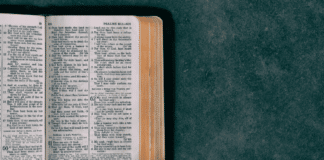A rare medieval Bible has returned to Israel after a journey spanning more than seven centuries. The Shem Tov Bible, a 14th-century Hebrew manuscript completed in 1312 by the Kabbalist Rabbi Shem Tov ben Abraham Ibn Gaon in Spain, is now on public display at the National Library of Israel in Jerusalem. Purchased for $6.9 million at a Sotheby’s auction in 2024, the Shem Tov Bible stands as one of the most valuable and spiritually significant Jewish texts of its time.
The library began exhibiting the manuscript on May 8, thanks to a loan agreement with its owners, the Herenstein family. Sallai Meridor, chairman of the National Library of Israel, said the display is “profoundly significant,” noting, “The Shem Tov Bible has come full circle and is now back home… in the land of Israel, and now in Jerusalem.”
The Bible’s journey has taken it through Spain, Jerusalem, Baghdad, Tripoli, London, and Geneva. By the 17th century, it had reached North Africa, where communities attributed mystical properties to the book—bringing it to women in labor to ease childbirth.
The manuscript features a blend of Jewish tradition and medieval Islamic and Christian artistic influence. Its ornate design includes “arcades, gothic arches, birds and beasts, gilded frames surrounding biblical verses,” and more. These symbols reflect the period’s artistic fusion and the Jewish principle of beautifying ritual objects.
Chaim Neria, curator at the National Library, emphasized the academic value of the manuscript: “A significant aspect of the codex is its observance of the Sefer Tagei, a traditional guide outlining the scribal practices required for writing sacred texts.” He also highlighted references to now-lost ancient texts like the Hilleli Codex of 600 CE.
The Herenstein family added, “We are delighted to know that the Shem Tov Bible is incorporated into the Library’s permanent exhibition… making it available worldwide, for study, research or to simply enjoy its beauty.”





